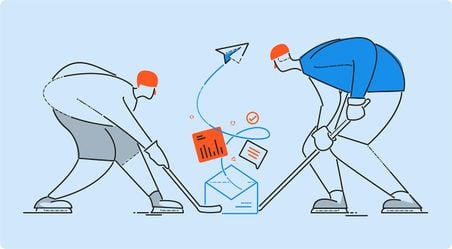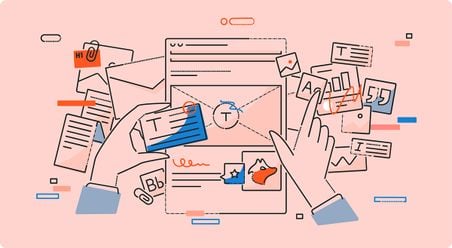Does B2B Slow Down in Summer? Why Lead Generation Still Works in July & August

Every July, it starts again. Founders pause campaigns. Marketers hold back launches. Sales teams brace for slow weeks. Across B2B, there’s a shared assumption: summer is a dead zone.
“No one’s around.”
“Budgets are frozen.”
“Let’s wait for September.”
But what if that belief is costing your business growth? And what if I were to tell you that 69% of decision makers don't have a "right time" for you to email them?
The idea that B2B lead generation in summer doesn’t work is deeply ingrained—and deeply flawed.
While traffic may dip and vacation responders rise, smart teams know this is exactly when you should lean in.
Because while everyone else is waiting, you have the chance to stand out.
Summary
Before we dive in, here’s why summer isn't a bad time for B2B:
- Summer isn’t dead—it’s just different. B2B lead generation in summer can work when you shift your mindset.
- Those who engage during July–August tend to be high-intent, strategic buyers planning for Q4.
- Inbox and ad space competition drops in summer, giving your outreach more visibility.
- Executives still check email, which means personal messaging can still break through.
- Summer is the perfect time to nurture leads, test messaging, and refine outreach strategies.
- European markets slow, but the US, Canada, and APAC remain active. Shift your geo-targeting accordingly.
- Now is the time to clean your data, rework your sequences, and prep your pipeline before the fall rush.
- Most teams stand still in summer. The ones who move now will lead in Q4.
Where the Summer Slowdown Myth Comes From
The data is easy to quote:
- Global site traffic drops from June through to the end of July (HubSpot)
- Gated content consumption, like eBooks and guides, drops (NetLine)
- Nearly 75% of companies say sales decline by 20% in the summer (Thewisemarketer).
- Big purchasing decisions are often delayed until the end of summer (Visable)
- And in Europe, the workforce takes extended holidays (JSTOR).
From a distance, it looks conclusive: summer is a bad time for B2B. But look closer and a different story emerges.
These numbers reflect volume, not intent.
The world doesn’t stop working in July. It just changes pace.
That’s where the opportunity lies, but it means changing our minds. Here's how to do that.
Reframing Summer: Six Contrarian Advantages
1. Lower Volume Doesn’t Mean Lower Intent
Yes, fewer people might be online, but the ones who are tend to be more strategic. Decision-makers active in the summer often have more space to explore solutions. Less fire-fighting means more forward-thinking.
Instead of chasing every lead, use this time to focus on high-intent prospects. Clean your list, prioritize Tier 1 accounts, and deliver messages that solve real problems. It’s not about more. It’s about better.
2. Less Competition, More Attention
With many teams pulling back, inboxes, socials, and ad platforms become less crowded. CPCs drop. Attention spans open up. That means your emails, ads, and posts stand a better chance of actually being seen—and remembered.
This is the moment to test creative angles you wouldn’t try during peak season. Launch that new sequence. Publish the big opinion piece. Run the brand campaign. Fewer voices in the market means your voice can carry.
3. Summer Is for Strategic Buyers
While day-to-day activity may dip, strategic planning accelerates. Many B2B teams use July and August to prepare for Q4 pushes and next fiscal year budgets. Vendor shortlists are drafted. Problems are scoped. Research begins.
By showing up now with case studies, ROI narratives, and planning guides, you’re positioning your solution as part of that future. Miss the window, and you’re out of the conversation before it starts.
4. Nurture Now, Close Later
Even if deals aren’t closing immediately, this is prime time for nurturing. A slower quarter gives you the space to educate, build trust, and plant seeds.
Don’t go silent. Send value-driven content. Start thoughtful conversations. Rewarm stale leads. The relationships you cultivate now will move faster come September, and you’ll be ahead of the teams just ramping back up.
5. Europe Slows, But the US Keeps Clicking
Summer vacation culture hits harder in EMEA than in North America or APAC. If you’re selling globally, shift focus to the US and Canadian audiences. These regions remain relatively active, especially among RevOps and founder roles.
Adjust your campaign timing and geo-targeting accordingly. Midweek mornings often perform best. Use Hunter’s Discover and lead management tools to build lists that are hyper-focused and allow you to personalize by region.
6. Your Audience Is Available—If You’re Worth Their Time
Executives don’t stop checking email. They just stop responding to irrelevant outreach. Smart, personal messages still cut through. Bad ones get ignored faster.
Mention the season in your subject lines. Offer something timely and valuable. Send from a real person, not a generic address. Most of all, show that you understand their world. That’s what earns a reply.
From Slump to Setup: Your Summer Playbook
Here’s how to turn July and August into your launchpad:
- Clean and verify your email list using Hunter’s Email Verifier.
- Review and optimize your cold outreach sequences with Hunter Campaigns.
- Test new messaging angles and LinkedIn hooks while inbox competition is low.
- Interview customers for Q4 case studies and testimonials.
- Experiment with long-form content or host a lightweight webinar.
- Refresh your segmentation and prepare a warm September pipeline.
Final Thought: Stand Still or Stand Out
The myth of the summer slowdown lives on because most teams treat these months as lost time. But in reality, the slow season is a setup season.
Your competitors are waiting for the market to come back. You could already be there, building relationships, testing messaging, and earning trust.
Don’t let traffic charts dictate your strategy. Focus on the people who are still in the room - and speak to them well.




 Send cold emails with Hunter
Send cold emails with Hunter